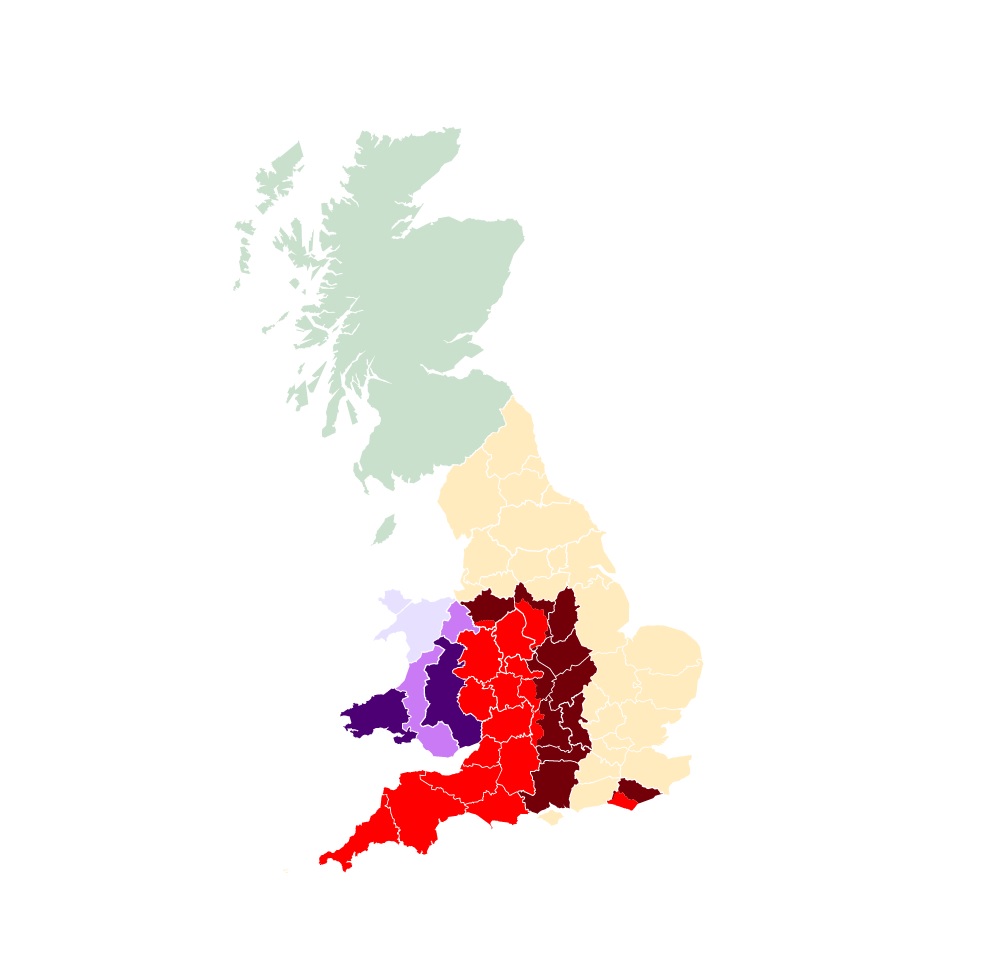
An interactive map has been launched making it easier for farmers to see at a glance the different bovine TB risk areas in Great Britain.
The new tool has been added to the TB Hub website which is considered the ‘go-to’ place for farmers to find practical advice on dealing with bovine TB on their farm.
The map highlights whether an area is at high or low risk from TB and reveals further information about an area’s status. Farmers can also access updates about their area’s testing intervals and movement restrictions.
The only area of the UK to be TB free is Scotland, which declared the Officially TB Free (OTF) status in 2009.
This means that the incidence of bovine TB is low enough to be declared free of disease, but small numbers of sporadic cases of bovine TB still occur. Since achieving OTF status, Scotland has adopted a risk-based surveillance strategy. Low risk herds that meet certain criteria are exempt from routine TB testing.
Low Risk Area's dominate Northern and Eastern England, which portrays a low incidence of bovine TB and no recognised significant reservoir of the disease in wildlife.
Most, if not all TB breakdowns are the result of undetected infection brought in through cattle movements. The Government has applied for Officially TB Free status for the this area of England.
The West Midlands and South West England contains a mixture of High Risk Area and Edge Area. This region has a relatively high incidence of bovine TB when compared with the Low Risk Area.
There are also proportionally more repeat cases among herds and there is a recognised reservoir of infection in wildlife, mainly badgers. Herds in Shropshire are TB tested annually.
Cattle keepers must also comply with pre-movement testing requirements i.e. all cattle 42 days old and over moving out of a herd must have tested negative to a TB test within 60 days before movement, unless an exemption applies to the animal being moved or the type of movement.
Wales currently witnesses the biggest impact of bovine TB. In Wales, there are two High TB Areas, one in West Wales encompassing Pembrokeshire and parts of Carmarthenshire, Ceredigion and Swansea. The High TB Area (Border) runs along the border with England, from North Powys to Gwent.
Bovine TB is endemic in the High TB Areas of Wales with a relatively high incidence compared with the Intermediate and Low TB Areas. These areas have a high number of new breakdowns and a high proportion of herds have another TB breakdown within 18 months of coming off restrictions.
The disease is present in a proportion of the local badger populations. Herds in the High TB Areas, as is the case for all herds across Wales, are tested annually.
Derek Armstrong, AHDB Lead Vet commented on the map. He said: “The new map makes it easier for farmers to access information about TB risk status and understand what it means for them.
“Dealing with bovine TB can impact financially and emotionally on farmers and their families. The TB Hub aims to give them the most up-to date information on how to reduce the TB risk to their cattle and manage the implications for their farm business.”
The hub is a joint industry initiative, supported by the Agriculture and Horticulture Development Board (AHDB), the Animal & Plant Health Agency (APHA), the British Cattle Veterinary Association (BCVA), the Department for Environment, Food and Rural Affairs (Defra), Landex and the National Farmers Union (NFU).
